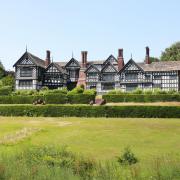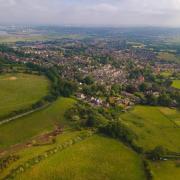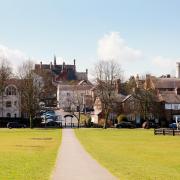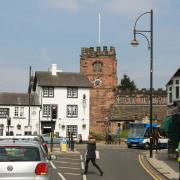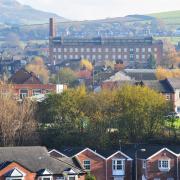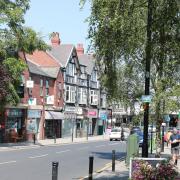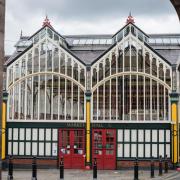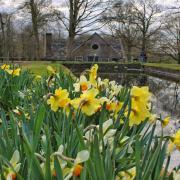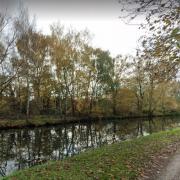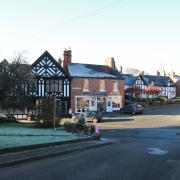A city whose museums and art galleries should stand with the best in the world
There is a famous tee shirt slogan which goes: ‘..And on the Sixth Day, God Created Manchester.’ There’s Mancunian arrogance and wit in one sentence.
If not exactly chosen by the Almighty, Manchester does nevertheless have a lot to boast about. It was the cradle of the Industrial Revolution, the scene of radical agitation which shaped British democracy, the seat of learning where the modern computer was born, a city whose sporting exploits resound even in Tokyo and Timbuktu and a hive of pop culture which has yielded much more than just clever tee shirt slogans.
Add to that the art and architecture bought by the wealth of Manchester’s heyday as Cottonopolis, and here is a city whose museums and art galleries should stand with the best in the world. And they do.
We looked at ten of the best.
On the buses
The Museum of Transport is a real hidden gem. Housed in a bus garage little more than half a mile from the Printworks, it gathers vehicles representing a century of people-moving, from an 1890 horse bus to a 1990 Metrolink tram.
For anyone stricken in years, this is a trip down memory lane. Look at the upper deck of a bus like the 1948 Bristol, with its low roof and bench seats, and you get a real sense of how we used to live. Then remember that back in the day practically everyone on that upper deck would be smoking.
Look also at the Yelloway coach and recall that, before the foreign package deal, this, not the jet plane, was the transport of delight for holidaymakers.
Each town ran its own bus services before 1969, and that rich variety is represented among the 70 vehicles here. Many of the exhibits are still roadworthy, and the museum is run by volunteers from the Greater Manchester Transport Society.
Don’t miss: The museum’s oldest vehicle, a horse bus from the 1890s.
Museum of Transport, Boyle Street, Cheetham, Manchester M8 8UK, 0161 205 2122, www.gmts.co.uk. Open Wednesday, Saturday, Sunday and Bank Holidays, and every day in August. Admission £4 adults, £2 concessions, children under 16 with an adult free.
Match of the day
Football may not be, as some have said, the new religion, but it’s certainly got its icons, hymns and parables. The chants which accompany your tour of the National Football Museum are the hymns. The sheepskin coat of John Motson may seem a mundane icon, but, seeing it behind glass in a museum, we all know what it represents. Likewise, the shirt worn by Diego Maradona when he scored the ‘Hand of God’ goal which helped put England out of the 1986 World Cup is an exhibit to prick the soul.
This is a museum even the football agnostic will enjoy. It’s about not just the action on the pitch but the emotions in the crowd and the social ramifications of football: the Bradford fire, hooliganism and all. Some clever interactive features such as the penalty shootout will burn up the kids’ energy, and there is an ‘immersive cinema’ experience - a big screen full of footie.
Don’t miss: The 1966 World Cup Final match ball with which England secured perhaps the nation’s greatest ever sporting victory.
National Football Museum, Urbis Building, Cathedral Gardens, Manchester M4 3BG, 0161 605 8200, www.nationalfootballmuseum.com. Open daily, free entry.
The Jewish museum
Manchester Jewish Museum is housed in a deconsecrated synagogue, so, if you know nothing at all of this religion, you get some sense of the act of worship just by walking through the door. Displays tell us how the Ark is the most important part of the synagogue and The Torah the most sacred object.
Displays also tell of the history of the Jews in Britain, right back to the edict of Edward I by which Jews were expelled in 1290.
Manchester’s own thriving Jewish community dates back to the 1780s, when pedlars and hawkers arrived, set up shops and graduated to trades such as tailoring, cap-making, cabinet-making and waterproof garment-making in the 19th century.
Don’t miss: The Harris House Diaries, kept by a group of young Austrian and German women in Southport in 1939-40 after their parents sent them to safety along with thousands of other Jewish children as part of the Kindertransport rescue mission. The diaries recall how they escaped Hitler’s tyranny by going ‘out of the country to the kind people who offered to take care of us’.
Manchester Jewish Museum, 190 Cheetham Hill Road, Manchester M8 8LW, 0161 834 9879, www.manchesterjewishmuseum.com. Open Sunday to Thursday, and Friday morning.
Made in Manchester
The sprawling Museum of Science and Industry is on the site of the former Liverpool Road Station - one end of the world’s first passenger railway.
It is full of reminders of Manchester’s pioneering spirit, telling, for instance, how Joseph Whitworth invented the standardised screw thread in 1840, paving the way for mass production, and how AV Roe became the first Englishman to fly an all-British aeroplane.
Wander through the Power Hall and you see, hear and smell engines at work, all oily, chuffing, whirring testament to the brilliance of the machine-makers of over a century ago.
But history may yet deem Manchester’s greatest contribution to science and industry to have come in 1948. Check out the museum’s replica of the ‘Baby’ computer. This ton of valves and metal represented the birth of the modern computer, and yet it boasted a memory less than a single Twitter message today.
Don’t miss: Underground Manchester - a rat-infested sewer, along with thought-provoking displays of life in 18th century, when the city ‘excelled in filthiness’ and the contents of thousands of chamber pots were daily tipped from Salford Bridge into the River Irwell.
Museum of Science and Industry, Liverpool Road, Castlefield, Manchester M3 4FP, 0161 832 2244.
www.mosi.org.uk. Open daily, free entry.
Talking ‘bout a revolution
If the Museum of Science and Industry tells us how Manchester helped invent the modern world through the Industrial Revolution, The People’s History Museum shows what effect that had on ordinary people and their aspirations.
That means social landmarks such as Peterloo - the reform meeting in 1819, attended by 60,000 mill workers and their families which ended in slaughter. It means trade unions, the birth of the Co-operative movement in Rochdale, the advent of the National Health Service, campaigns for equal pay, anti-racism, nuclear disarmament and gay rights.
Seemingly dry topics come alive through vivid displays such as huge banners, the Spitting Image puppet of Harold Wilson and well-told tales of struggles from the Tolpuddle Martyrs to the Miners’ Strike of 1984-5.
The ‘Battle for the Ballot’ - explaining the evolution of democracy - is emblazoned across a huge expanse of wall between floors.
Don’t miss: The ‘donkey jacket’ worn at the Cenotaph on Remembrance Day 1981 by then Labour leader Michael Foot. He was lambasted in the Press for being irreverently scruffy. In fact, the coat came from Harrods and is rather smart.
The People’s History Museum, Left Bank, Spinningfields, Manchester M3 3ER, 0161 838 9190.
www.phm.org.uk. Open Monday to Sunday, free entry.
War and peace
Architect Daniel Libeskind’s evocation of a world blown apart and reassembled as aluminium-clad shards grabs your attention before you even go through the door.
A Harrier Jump Jet stands in the main exhibition room like an Airfix model. An old Jeep hangs from the roof as if blown there by an explosion. A Soviet tank from 1940 stands menacingly. The displays show us military regalia, weaponry, old newspapers, accounts from the battlefield, the effect of two world wars on life in Britain. It tells us about propaganda, rationing, the Cold War.
There are poignant words everywhere to be seen, none more so, in this centenary of the First World War, than those of Private Arthur Wrench of The Seaforth Highlanders in 1918: ‘Surely this is the last war that will ever be between civilised nations.’
Don’t miss: The Protect and Survive government information film from 1976, advising people to create a fall-out room in their home from doors and suitcases. It would be grimly funny but for the real and so recent fear it betrays of possible nuclear attack.
Imperial War Museum North, The Quays, Trafford Wharf Road, Manchester M17 1TZ, 0161 836 4000. www.iwm.org.uk . Open daily, free entry.
Fashion passion
At the Gallery of Costume, the exhibits have to work hard to outshine the setting, for Platt Hall, an 18th century textile merchant’s home, is one stylish pile.
This is one of Britain’s largest collections of clothing and fashion accessories, running to 20,000 items. Upstairs, we discover the ‘art of elegance’ from 1740 to 1840, including a tartan men’s suit from 1830 so eye-wateringly dapper it seems like one of the more outré offerings of a present-day designer. Then there is the Cunnington collection, amassed in the 1930s by a far-sighted doctor and his physician wife, who reckoned that one day we would want a tangible reminder of what women wore in Victoria times.
Downstairs, you can browse displays showing what was worn through each decade of the 20th century and into the Noughties, perhaps the most evocative age still being the ‘60s, with geometric-design mini dresses, bold print maxi dresses and psychedelic hot pant-dress combinations. Fab!
Don’t miss: The 1950s Christian Dior designs in the lovely setting of Platt Hall’s dining room.
Gallery of Costume, Platt Hall, Rusholme, Manchester, M14 5LL, 0161 245 7245
www.manchestergalleries.org, Open daily, but only in the afternoon on weekdays, free entry.
Nature red in tooth and claw
Manchester Museum is the place to take the little people in your lives. Kids loves the thrill of being close up to a stuffed tiger, rampant and ‘snarling’, in a display case, or standing beneath an enormous replica of the skeleton of a Tyrannosaurus Rex.
The vivarium is also child-friendly and fun, as you struggle to spot a chameleon, a python or a bumblebee poison-dart frog in among the vegetation.
Yes, the stuffed beasts are endlessly fascinating, as are the skulls and skeletons of man and his nearest relatives among the apes, the sponges and fossils, the birds, the beetles, the butterflies...it’s all spectacular stuff, and in a building which has ingeniously mixed the traditional and the modern.
Don’t miss: The Egyptology collection is one of the most important in the UK, with objects dating back up to 12,000 years. The museum funded the archaeologists who found many of these artefacts, and the mummies are still the subject of research today.
Manchester Museum, Oxford Road, Manchester M13 9PL, 0161 275 2648, www.manchester.ac.uk/museum. Open daily, free entry.
The Old Bill
The Greater Manchester Police Museum offers a unique glimpse of bygone times, and in a building where that history was lived.
Stand in a cell and imagine what it must have been like to be banged up there in 1879. Then look at the riot gates installed across the front door and put yourself in the shoes of a 19th century copper incurring the displeasure of a drunken Mancunian mob.
You can see uniforms going back to the top-hatted Peelers of 1840, an array of truncheons and handcuffs and even an authentic-looking courtroom, kitted out using the interior of the former Denton magistrates’ court.
Grisly tales of crime and punishment abound. Check out the ‘Iron Child’ - a 35-pound piece of metal which prisoners at Belle Vue jail in the 19th century were forced to lug around as a punishment.
Don’t miss: The display of weapons confiscated from members of the public, including machetes, samurai swords, knife and knuckle duster combinations and a nail-studded cricket bat.
GMP Museum, 57a Newton Street, Northern Quarter, Manchester M1 1ET, 0161 856 3287 www.gmpmuseum.com. Open Tuesday (and Thursday during school holidays), free entry.
Art old and new
Just like its exhibits, Manchester Art Gallery is a wonderful combination of the old and the new. One moment you can be strolling across old parquet flooring through traditional galleries of 18th and 19th century art, the next you are crossing a frosted glass bridge to the modern and contemporary section and seeing a mesh-like Antony Gormley figure hanging above the stairwell.
There is an enormous amount to go at, from art in the Netherlands 1600-1800, through the centuries to the Pre-Raphaelites (Ford Madox Brown, Holman Hunt and Millais represented) to some opulent Victorian works and on to a busy schedule of exhibitions of current art.
For sheer sensual beauty, my favourite niche is gallery 8: In Pursuit of Beauty, featuring such striking, and frankly erotic, paintings as Charles-August Mengin’s Sappho and John William Waterhouse’s Hylas and the Nymphs. Nearby is Alexander von Wagner’s The Chariot Race, which somehow manages to pack the kinetic excitement of widescreen cinema into a 19th century oil painting.
Don’t miss: William Etty’s The Sirens and Ulysses, an enormous (about 14 feet by 9 feet) oil painting from 1837. The artist’s avowed masterpiece, it has been subject to a painstaking restoration.
Manchester Art Gallery, Mosley Street, Manchester, M2 3JL, 0161 235 8888. www.manchestergalleries.org. Open daily, free entry.




